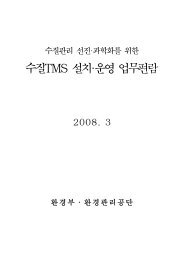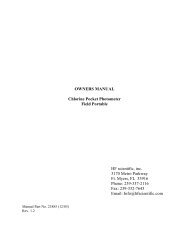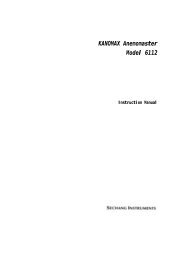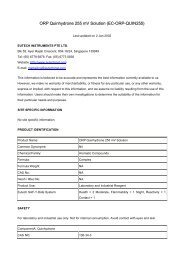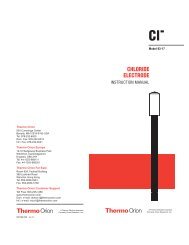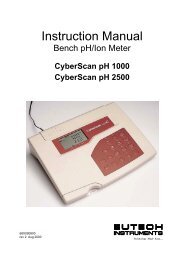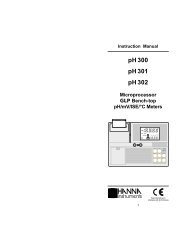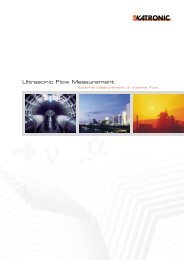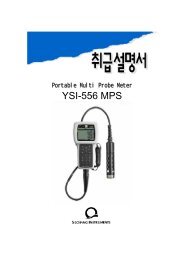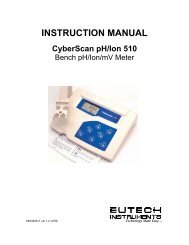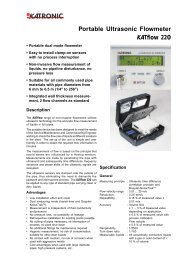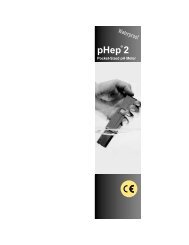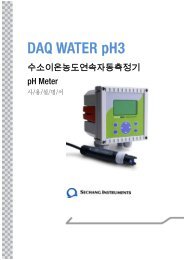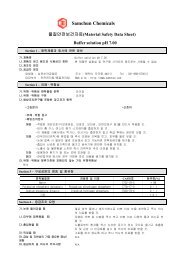MODEL 2100AN LABORATORY TURBIDIMETER INSTRUMENT ...
MODEL 2100AN LABORATORY TURBIDIMETER INSTRUMENT ...
MODEL 2100AN LABORATORY TURBIDIMETER INSTRUMENT ...
You also want an ePaper? Increase the reach of your titles
YUMPU automatically turns print PDFs into web optimized ePapers that Google loves.
SECTION 4 AIR PURGE SYSTEM<br />
4.1 AirPurgeConnection<br />
An air purge system is provided to purge the optical compartment with dry air to<br />
prevent condensation on the outside of the sample cell when measuring cold<br />
samples. This system is particularly useful when using the Flow-Thru Cell<br />
assembly.<br />
Note: Do not exceed 138 kPa<br />
(20 psig).<br />
Figure 7 Air Purge Connections<br />
Dry nitrogen or instrument grade air (ANSI MC 11.1, 1975) up to 138 kPa<br />
(20 psig) can be used to air purge the optical housing compartment. The<br />
recommended air consumption rate is between 3 and 10 SCFH (standard cubic<br />
feet/hour). The connection is made at the Air Purge fitting on the rear panel.<br />
When the sample temperature is expected to be near or below 2 ° C(35° F), use a<br />
desiccant dryer and particle filter to assure the dew point of the air purge is below<br />
the sample temperature. The air dryer contains silica gel desiccant that turns pink<br />
when exhausted. Life expectancy of the desiccant depends on the moisture content<br />
of the air.<br />
If only shop air is available, use a coalescing filter with automatic drain in<br />
conjunction with a dryer and particle filter to achieve instrument quality air. Life<br />
expectancy of the coalescing filter should exceed 2000 hours. Change the particle<br />
filter at the same time as the air dryer. Figure 7 illustrates methods of connecting<br />
the two types of air supply to the instrument. The dryer and filter are not necessary<br />
if dry nitrogen is used for the air purge.<br />
47



